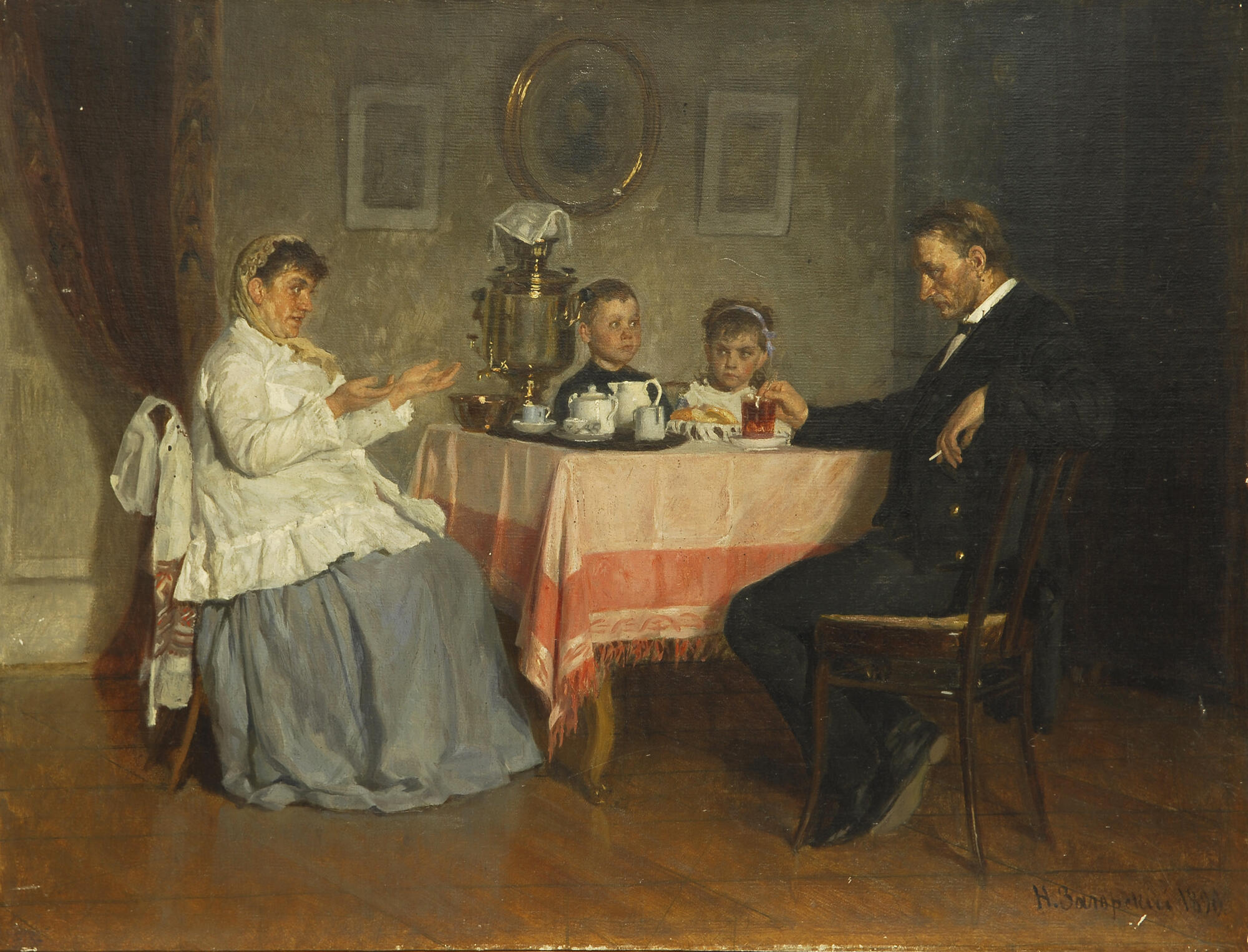Nikolai Zagorsky painted the piece ‘Tea Party’ in 1890. He portrayed a family in the interior of a bourgeois house. Adults and children gathered at a common table with a samovar and a tea set. The conversation does not go well — the father of the family does not look at his wife, he mixes the tea in a glass and holds a cigarette in his hands. The children frown and look around. The author captured a typical situation: a man and a woman decently furnish an apartment, keep it clean, get together at tea parties — but this does not unite the family.
Nikolai Zagorsky lived from 1849 to 1893. He is known as a Russian genre painter. Genre painting is depicting scenes from everyday life. Such pictures are valued for their ability to grasp the essence of time, to reveal the typical characters of contemporaries, to show painful or conversely, funny phenomena in the life of society. Genre painters, as a rule, place their characters in an environment recognizable by their contemporaries.
Nikolai Zagorsky dedicated his work to just such a reflection of reality. The painting ‘Tea Party’ shows the characteristic sign of the times. The mother of the family is dressed in a then fashionable bonnet — headdress, combining the features of a cap and a hat. Initially, it appeared in Europe at the turn of the 19th century in the clothes of maids, but gained popularity among their mistresses. The bonnet went out of fashion by the 1860s, but returned in the early 1890s. Curtains, photographs on the walls, a samovar — all this was also familiar to people of that time.
Nikolai Zagorsky had an excellent academic background, so he skillfully displayed the smallest details of the situation. In ‘Tea Party’ he easily conveyed the texture of each surface — the shine of a polished pot-bellied samovar, velvet curtains, smoothness of the polished floor. He also casually painted figures of people, capturing a variety of gestures and facial expressions. In his canvases, many recognized themselves and their friends, the paintings spoke to the audience in an understandable language — and therefore were very popular.
The works of Nikolai Zagorsky have regularly appeared at academic and international exhibitions, as well as at the exhibitions of the Peredvizhniks. Among the Peredvizhniks, he found especially many like-minded people — artists of this circle constantly created genre scenes on topical issues.
Nikolai Zagorsky dedicated his work to just such a reflection of reality. The painting ‘Tea Party’ shows the characteristic sign of the times. The mother of the family is dressed in a then fashionable bonnet — headdress, combining the features of a cap and a hat. Initially, it appeared in Europe at the turn of the 19th century in the clothes of maids, but gained popularity among their mistresses. The bonnet went out of fashion by the 1860s, but returned in the early 1890s. Curtains, photographs on the walls, a samovar — all this was also familiar to people of that time.
Nikolai Zagorsky had an excellent academic background, so he skillfully displayed the smallest details of the situation. In ‘Tea Party’ he easily conveyed the texture of each surface — the shine of a polished pot-bellied samovar, velvet curtains, smoothness of the polished floor. He also casually painted figures of people, capturing a variety of gestures and facial expressions. In his canvases, many recognized themselves and their friends, the paintings spoke to the audience in an understandable language — and therefore were very popular.
The works of Nikolai Zagorsky have regularly appeared at academic and international exhibitions, as well as at the exhibitions of the Peredvizhniks. Among the Peredvizhniks, he found especially many like-minded people — artists of this circle constantly created genre scenes on topical issues.




